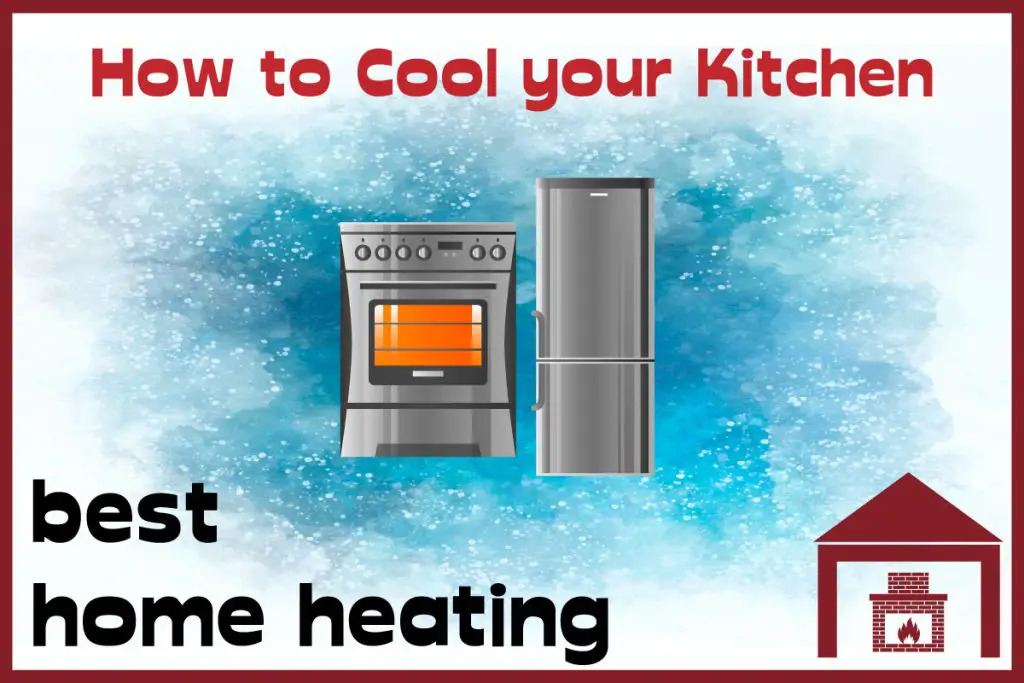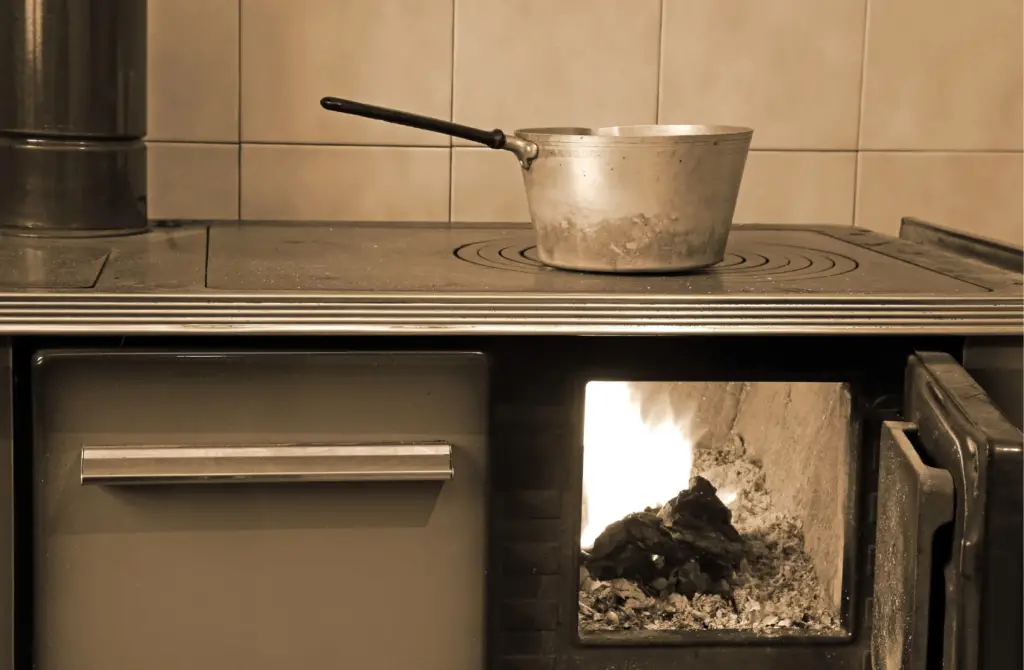On hot summer days, spending time in a kitchen can feel intimidating, but there are numerous simple and cost-effective methods to cool it down and make the experience more pleasant.
To cool your kitchen, consider getting an air conditioning system, microwave, pressure cooker, rice cooker, and induction stove. Alternatively, keep windows open, clean the fridge, avoid using the oven, and prep meals at night for a more comfortable experience.
Discover in this post everything you need to know about cooling a kitchen, as we aim to equip you with actionable steps for a more comfortable cooking experience. Read on to find out more!

1. Install an air conditioner
It’s safe to install an air conditioner in the kitchen. Under normal conditions, refrigerants used in the system are not flammable, so there is no risk of a fire hazard. With that said, there are a few things that should be taken into consideration when installing an air conditioner in a kitchen.
Make sure the unit does not directly blow onto your gas stove, because air from the unit will reduce the efficiency of the stove. As a result, cooking will get slower. So, the air conditioner should not be installed too close to your gas stove.
Also, do not put hot appliances such as microwaves, pressure cookers, rice cookers and ovens under the air conditioner. These appliances release hot steam. If the steam goes into the AC unit, it will become less efficient and end up consuming a lot more power. A fully installed room air conditioner will cost anywhere between $1200 and $1700.
2. Use an induction cooker
Using a traditional stove in a kitchen is not a good idea, especially if it’s a small kitchen with no ventilation. Replacing your traditional stove with an induction stove is a simple but effective way to cool down your kitchen.
Benefits of using an induction stove include precise control, quicker heat, and easy cleanup. Instead of heating the cooktop, the magnetic currents of the stove directly heat your pans and pots.
The surface does not get hot until you put the right cookware in the cooking zone. Unlike ranges and other types of stoves, an induction cooker does not heat up your kitchen. The device also cools down quickly. An induction cooker costs $25-$90.
3. Get a table fan or ceiling fan
By circulating the air inside, a fan can pretty quickly make your kitchen cooler. Even if you have a ceiling fan installed in your kitchen, consider getting a table fan as well for more comfort. A high-quality table fan will cost $50-$90.
Here is an interesting idea: make a DIY AC with a table fan and some ice. Just fill a bottle with water and keep the bottle in the freezer. When the water turns to ice, attach it to your table fan. The fan will act like an air conditioner, blowing cold air.
4. Choose your kitchen appliances carefully
Appliances such as pressure cookers, microwaves, electric grills and rice cookers do not heat up your kitchen. Consider using these appliances instead of a stove. They can also significantly reduce your time spent in the kitchen.
5. Cover up the windows
You may love it when sunlight peeps through your kitchen windows, but the rays can quickly raise the temperature inside your kitchen. If you have curtains fitted on the windows, keep the curtains down when the rays shine brightly. Lift them up when it’s cooler in the evening. If the day is not sunny and it’s stuffy inside the kitchen, keep the windows open.
6. Avoid using the oven
During hot summer days, an oven can heat up your kitchen too quickly and make it a terrible place to spend time in. Avoid using the oven whenever possible. Instead, use the alternative appliances we have mentioned. Typical ovens are less efficient than relatively modern cooking appliances such as induction cookers.
7. Prepare meals at night
You can significantly shorten your cooking time by prepping meals at night or early in the morning—before the weather gets too hot. And when it’s time to eat, you can quickly warm the food by putting it in the microwave.
Alternatively, opt for a cold meal, such as a sandwich or salad that does not require you to work in the kitchen for a long time. You may prefer such a light meal when you are less hungry.
8. Use less light in the kitchen
Lighting can heat up your kitchen pretty quickly, so reduce the intensity of lights. Avoid using low-hanging bulbs. A few spotlights installed in the ceiling may be enough to keep the room fairly well-lit.
9. Clean the fridge
Spend some time cleaning out your fridge. Handling some ice is a good way to put up with the discomfort of heat. However, make sure you do not spend hours doing this. Don’t keep the items out of the fridge for too long. If the door is open for a long time, your fridge will have to work harder to keep cool, and thus consume more energy.
10. Wear the right clothes
The intensity of the heat you feel in the kitchen also depends on the clothes you are wearing. Wear light clothing. If you are alone in the house, what about not wearing anything at all?
What are the main sources of excess heat in the kitchen?
Most types of stoves produce more heat than the amount needed to cook food. Aslo, as we have stated, both natural and artificial lights can make your kitchen uncomfortably hot. Excess heat in the kitchen is not just uncomfortable, it’s a waste of energy.
In order to address this issue, you can just invest in an induction cooker, which produces the exact amount of heat needed to cook food.
The excess heat is felt in the kitchen particularly in summer, in the middle of the day when the sun is shining brightly. The temperature in the kitchen may not be an issue at other times of the day.

Do high temperatures in the kitchen affect the quality of food?
It is not really a new insight that high temperatures adversely affect the quality of food. Food stays fresh for longer periods in low temperatures.
Bacteria grow rapidly in temperatures ranging from 4°C to 60°C. This range is often called the “danger zone”, in which bacteria double in number in just 20 minutes. If the temperature in the kitchen is above 32°C, do not leave food out for more than an hour.
When should you use a kitchen extractor fan?
A kitchen extractor fan removes moist air from your kitchen, making the room feel less hot and sultry. Turn on the fan every time you work in the kitchen. If it is a recirculating fan, clean and replace the filter regularly.
These filters do a pretty good job when it comes to capturing grease, but they do not significantly lower the temperature in the kitchen. If it is relatively cool outside, open the windows to cool down the kitchen.
Does ambient temperature affect the performance of a refrigerator?
Yes, it does. Your refrigerator will struggle to maintain the set temperature once the ambient temperature has reached 32°C or higher. If the ambient temperature reaches 37°C, the temperature inside your refrigerator may not remain stable.
Your food items, however, are unlikely to get spoiled quickly even if the refrigerator does not work optimally. Just keep the refrigerator clean and do not open the door too frequently.
Think of the hot summer months when designing your kitchen
It’s a good idea to choose heat-proof designs for kitchens because summers are likely to get hotter in the coming decades. Design your kitchen in such a way that there is sufficient space for air circulation. Your kitchen will not become uncomfortably hot and stuffy if there is enough ventilation.
Install cooker hoods to improve air circulation and mitigate odors. Choose lighter colors for cabinetry and countertops because light colors absorb less heat.
Conclusion
High temperatures in the kitchen is not only uncomfortable for you but also bad for your food. A hot kitchen feels unbearable, but there are many simple ways to cool down your kitchen in minutes. Even if you are not ready to invest in cooling devices, there are ways to reduce temperature in your kitchen.
If it is stuffy inside but relatively cool outside, the simple act of opening the windows can make a big difference. But it also depends on your geographical location. If you are living in a place where summers are really hot, getting an air conditioner installed is the best option for you.
References:
- https://aircondlounge.com/can-you-put-an-air-conditioner-in-the-kitchen/
- https://www.magicbricks.com/blog/is-it-advisable-to-keep-ac-in-your-kitchen/105697.html
- https://www.homify.in/ideabooks/5290417/7-ways-to-cool-down-a-hot-kitchen
- https://www.bbc.co.uk/food/articles/energy_saving_tips
- https://www.housebeautiful.com/uk/lifestyle/a40599053/keep-kitchen-cool-summer/
- https://kitchenventilation.com/2020/07/22/how-does-radiant-heat-affect-your-chefs/
- https://scialert.net/fulltext/?doi=ajaps.2014.79.87#:~:text=From%20the%20test%20results%2C%20energy,compared%20to%20closed%20door%20condition.
- https://www.fsis.usda.gov/food-safety/safe-food-handling-and-preparation/food-safety-basics/how-temperatures-affect-food#:~:text=Because%20leaving%20food%20out%20too,and%20the%20foods%20we%20eat.
- https://home.howstuffworks.com/kitchen-exhaust-fan.htm#:~:text=Turn%20on%20your%20exhaust%20fan,window%20is%20your%20best%20bet.
